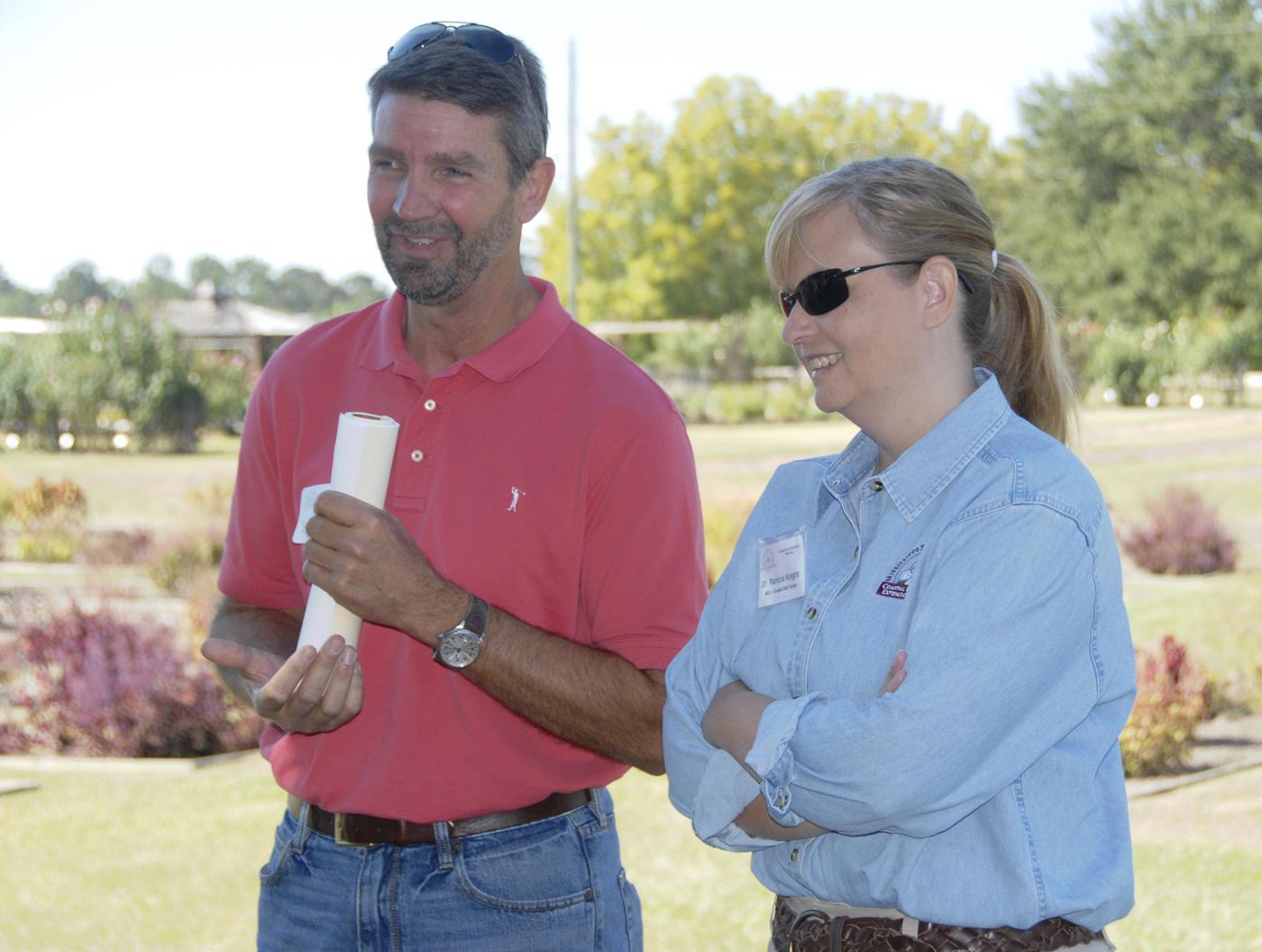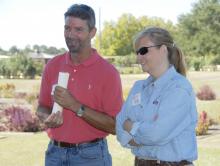Information Possibly Outdated
The information presented on this page was originally released on October 28, 2010. It may not be outdated, but please search our site for more current information. If you plan to quote or reference this information in a publication, please check with the Extension specialist or author before proceeding.
GreenForest Nursery partners with MSU Extension
By Cheree Franco
MSU Ag Communications
POPLARVILLE - Dan Batson and Mississippi State University have been collaborating on horticulture projects for more than 30 years, beginning in the late 1970s when Batson entered the university as an undergraduate horticulture student.
Batson completed both his bachelor’s and his master’s degrees at MSU and worked a year at a Louisiana growing operation before founding GreenForest Nursery on land that his family has held for two centuries. He has been running his own business for 27 years, and MSU’s Extension Service has become invaluable.
“It’s my first stop,” he said of the South Mississippi Branch Experiment Station, which is only a 20-minute drive from his Perkinson nursery. “They’ve always got advice on growing techniques, and they’re especially helpful if I have disease problems. Because they’re so close, they’ll even come to me.”
GreenForest is 140 acres of container trees--oaks, crepe myrtles and magnolias, among other species--that Batson sells to landscape contractors.
“I do enjoy the challenge of running a successful business, and I like working outside,” Batson said.
But what he finds most rewarding is observing how much his 40 employees enjoy working with plants.
Growing can be tricky. Hollies are among Batson’s bestsellers, and certain species have a deadly enemy: Fusarium disease.
Fusarium is a fungus that occurs in much agricultural soil worldwide. The fungus penetrates the roots, invades the vascular system and poisons the plant. Warren Copes, a U.S. Department of Agriculture researcher, is analyzing Fusarium at the South Mississippi Branch Experiment Station, in conjunction with MSU horticulturalist Eugene Blythe.
“At the Experiment Station, they’re working on Fusarium disease right now,” Batson said. “That’s about my biggest challenge. At least, that’s the biggest challenge they can help me with.”
The first step is to monitor spore dispersal for two years, which allows Copes to understand how the pathogen infects healthy plants.
“Fusarium wilt consistently causes crop loss and is nearly impossible to eliminate,” Copes said. “The most sustainable approach is to target simple management practices and strategic chemical usage.”
Copes also plans to sample GreenForest’s ponds as he studies a destructive water mold called phytophthora that spreads through irrigation systems.
“Once I complete my research, I will work with Extension,” Copes said.
“We’re always looking for grant opportunities to better serve growers,” said Alan Henn, an MSU Extension professor and plant pathologist. “It’s difficult in the ornamental world to find funding, because it’s not supported by major U.S. Department of Agriculture funding outlets. Warren and I try to combine funding from our various avenues and transfer that funding to grower level applications.”
Anthony Witcher, another horticulturalist stationed at the Poplarville Station, has worked with Batson on alternative growing mediums. Pine bark, the industry standard, is increasingly expensive and difficult to obtain. With Batson’s permission, Witcher was able to field-test new growing mediums in real-life situations at GreenForest Nursery.
“It’s a benefit to us, too, because once this research is done it will lead to a much more reliable growing medium,” Batson said.








